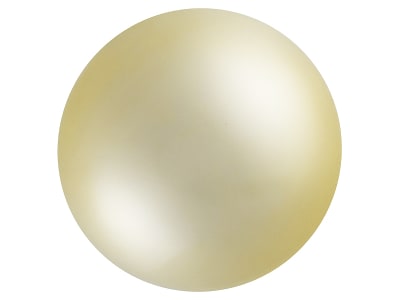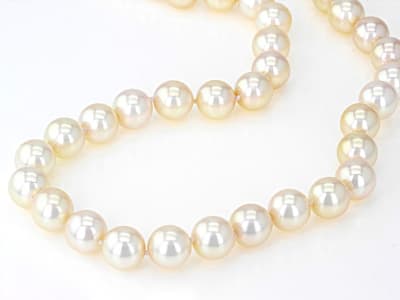Akoya pearls are the saltwater pearls produced by the Akoya oyster, Pinctada fucata martensii and Pinctada fucata chemnitzii. When the Akoya pearls achieve a great nacre thickness the pearls appear to “glow” due to their fine luster. The Japanese are the largest producers of Akoya pearls. Japanese Akoya pearls gained their notoriety after the promotion efforts of Kokichi Mikimoto a famous pioneer of cultured pearls. The Chinese began to experiment with culturing Akoya pearls after the Japanese experienced environmental issues. Pearls are typically well rounded and can grow up to 10mm.
General Information
LWUV: Variable
Akoya Pearl Colors
-
 Black
Black -
 Blue
Blue -
 Brown
Brown -
 Gray
Gray -
 Pink
Pink -
 White
White -
 Yellow
Yellow
Alternate Names
Akoya-Gai, Hanadama Akoya Pearls
Countries of Origin
Viet Nam; Korea (the Republic of); Unknown; China; Japan; Australia; Indonesia
History
Envision the shimmering beauty of moonlight across calm waters... the gentle movement and delicate dance of light. Capture that vision in an elegant orb, and you have the akoya pearl. What you're seeing in your mind's eye is the luster that makes these glorious stones so compelling. Soft blushes of white-to-cream color whisper across the surface of a fine akoya, with subtle nuances of rose or silver. The real story of the akoya is found in her incomparable beauty. She is the pearl that sets the standard for most pearls. The pearl is known as "the Queen of Gems."
Care
Pearls require special handling. Wipe clean with a soft cloth. Follow the last-on, first-off rule: they should be the last thing you put on and the first thing you take off. Always avoid contact with oils and fragrances.
More About Akoya Pearl
As one of the earliest known gemstones and one of the loveliest, the pearl has been the center of endless tales and legends. Here are some we enjoy: In ancient Persia it was thought that pearls were formed when a rainbow met the earth after a storm. Imperfections? They were caused by thunder and lightning! Another version tells us that pearls are created when moonbeams unite with oysters. We find it easy to believe that the lovely pearl is a child of the moon. Folklore has it that Cleopatra told Mark Anthony she could drink a fortune in a single cup. As the story goes, she crushed a pearl, mixed it with wine/vinegar and drank it.

